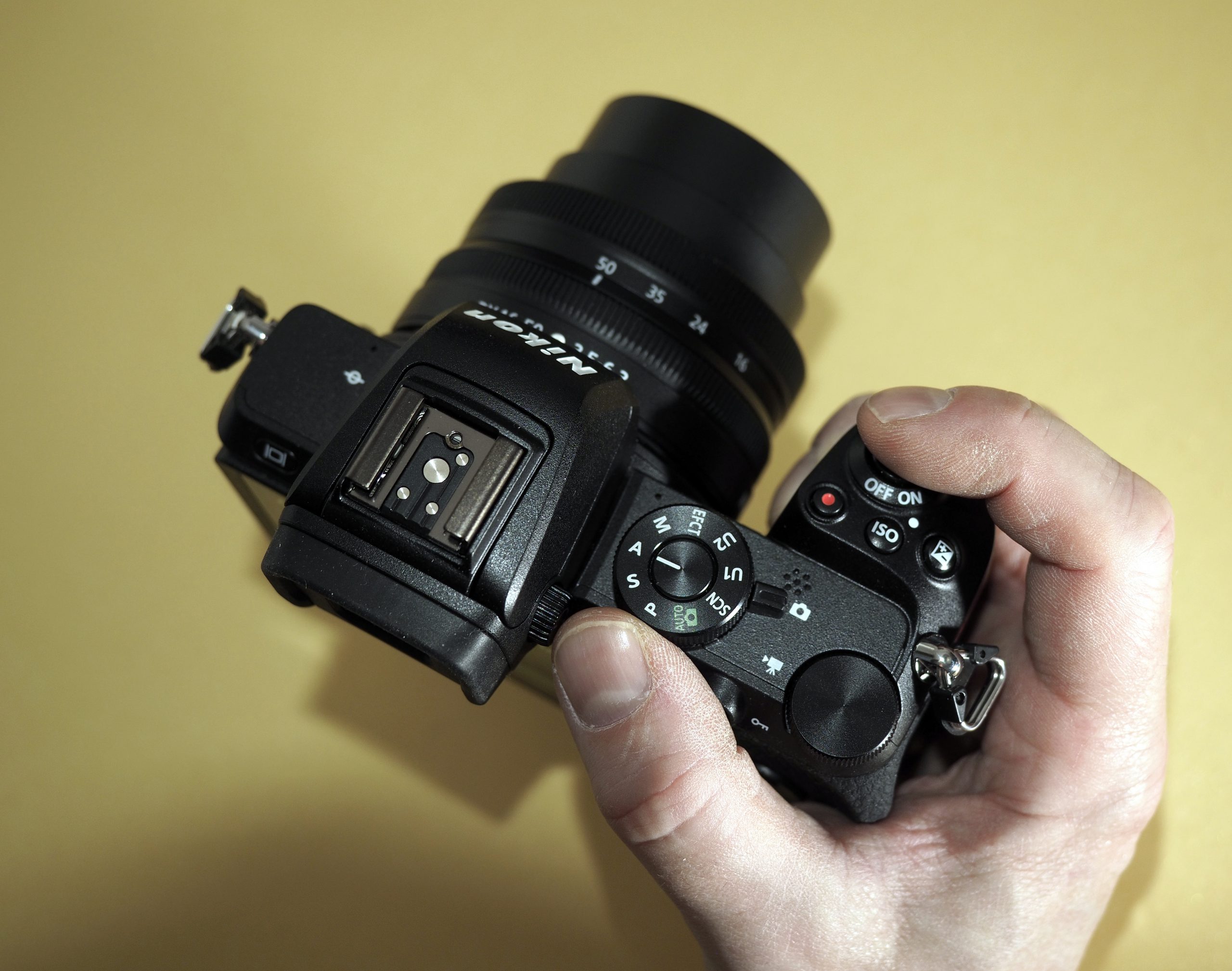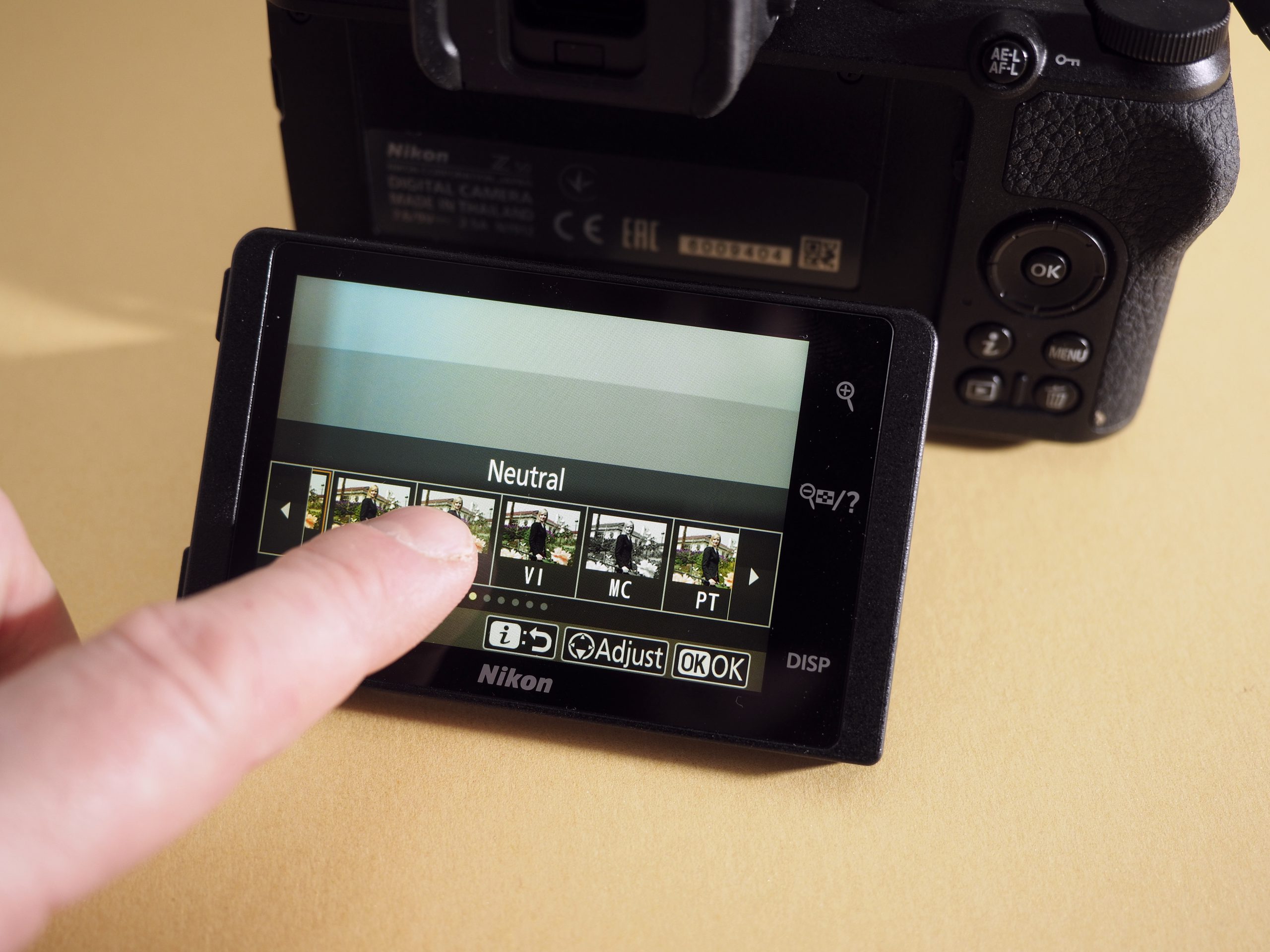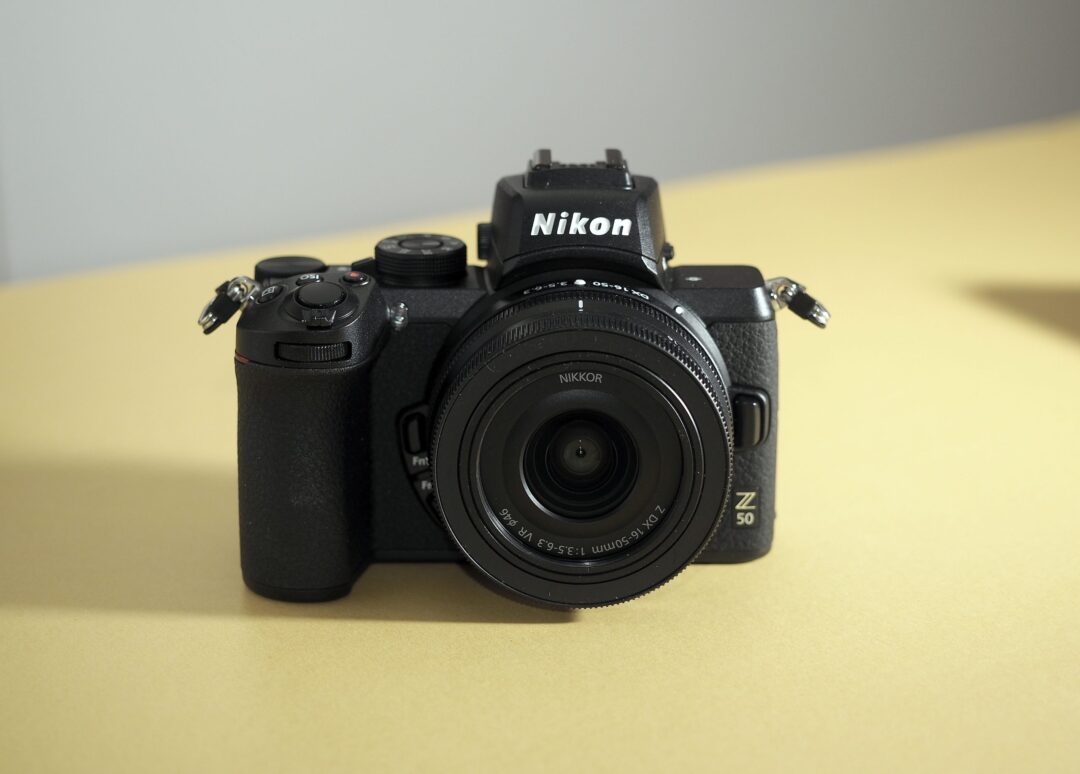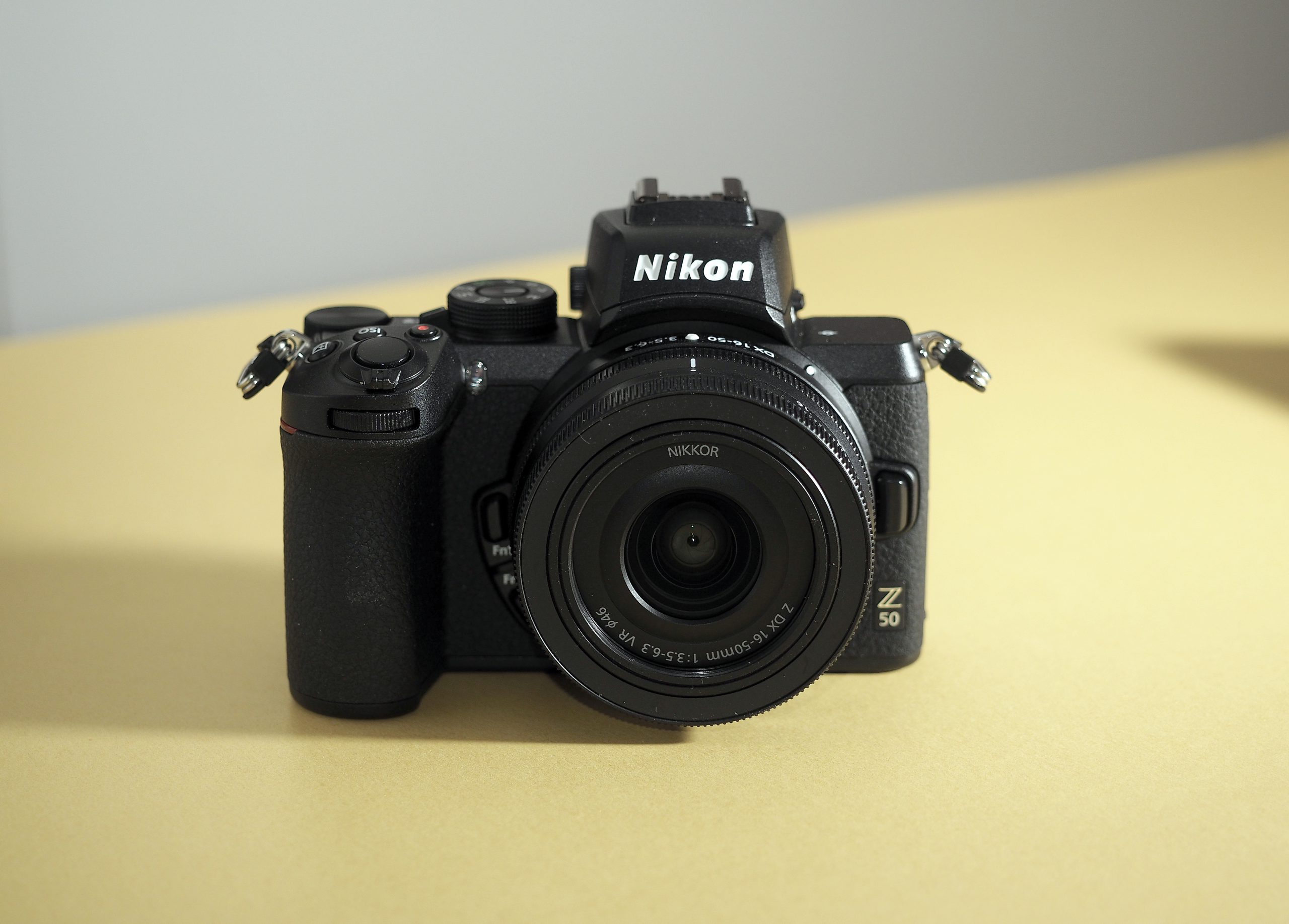A dense stream of full-frame cameras has driven prices up, far beyond the price level of the cameras that would otherwise be more than satisfactory for the beginner. Which has been eaten away with an increasingly thin selection of affordable cameras in stores.
There is a long way between the exceptions, and among the very cheapest we find two, three-year-old SLR cameras, which do not exactly arouse the desire of anyone.
The same goes for the mirrorless cameras. Praised for its compact dimensions, fine image quality and excellent ease of use. Here, too, there is a long way between the exciting news, but cameras such as the Canon EOS M6 Mark II, Sony a6400 and Fujifilm X-T30, stand out positively. There are three excellent all-round cameras that are suitable for both amateurs and advanced.
Now Nikon also wants to be part of the game, with what is their first mirrorless camera in APS-C format. In other words, a camera where the image chip is slightly smaller than in a full-frame camera. It provides small, handy, lightweight and travel-friendly cameras, which do not have to be without substance at all. The three above-mentioned cameras have already proven this.
Pro DNA
The similarity between a Nikon Z50 and a full-frame Nikon Z6 is not accidental. The two cameras share the same large lens mount, and Nikon has obviously used the Z6 as inspiration for the Z50. Which is a kind of Z6 light, only with smaller image chip.
There are already two, and there will be more Nikon lenses that are adapted to the Z50’s 21 megapixel image chip in APS-C format, but the Z50 can also use the very sharp Nikkor lenses in the S-series that are adapted to full format. Only with a cropping factor of 1.5 x, which gives just over 50mm focal length on a Nikkor Z 35 / 1.8 S.
The camera can also use Nkon’s AF-S lenses for their SLRs in DX (APS-C) and FX format (FF), with the FTZ adapter that comes with the camera, or is purchased separately.
Lenses
Simultaneously with the launch of the camera, the Nikon Z released 50-250 mm f4.5-6.3 VR DX (75-375mm), which is a telephoto zoom for APS-C, and the normal zoom Z 16-50 mm f3.5-6, 3 VR DX (24-75mm). Both with optical image stabilization. And that’s good, because the camera has no internal image stabilizer a la Nikon Z6.
But it has something neither of the two lenses has, namely weather sealing of the camera body. Not at the same level as a professional camera though, but more than enough for the camera to withstand the onset of rain.
The technical
The camera’s 21 mp image chip corresponds to the one we tested in the Nikon D7500, the autofocus is picked from the Z6, with which it also shares the 55mm large bayonet mount. There is of course 4K video here, it is the rule more than the exception in these times, and the quality is excellent in every way.
The autofocus is taken from the Z6 and is for all practical purposes, fast, precise and accurate with the 16-50mm zoom. It does not stick as well to moving motifs. The follow focus works well when panning, but does not always hit when the subject moves to or from.
The headphone output that had made the Z50 the perfect vlogger camera is missing, but it has a microphone input, and you can select the focus point on the touch screen during recording. Unfortunately, that feature is not the most accurate we have tried, and strangely enough does not work when using the viewfinder instead of the screen.
Which, and it must be mentioned, has a pointing field to the right with three symbols. One to enlarge the screen or viewfinder image, one to zoom out, and one to change the screen and viewfinder information.
The user experience
Compared to Nikon’s D7500 SLR, the Z50 is tiny. With the 16-50mm zoom, the camera is much smaller than the Z6 with 24-70mm, but it is not significantly smaller than the competitors in this class.
The Canon EOS M6 II is even more compact, but lacks a viewfinder. However, it is faster, with three almost times as fast firing rate. The Sony a6400 is about as fast, but has the best following focus in its class and beats the competition’s eye focus. The Fujifilm X-T30 provides the best user experience overall, and here the range of lenses is also much larger.
So far, Nikon has only announced an 18-140mm zoom for the Z50, but we hope it won’t be long before more lenses arrive.
The camera is small, but no less than Nikon has room for a relatively good grip on the side, it has two setting wheels, a switch that you quickly switch from still images to video with, and a tiltable touch screen. With selfie mode, of course.

The included 16-50mm zoom must be turned from the locking position that makes it so compact, to a focal length to work. This retractable lens construction is very common on zoom lenses that are supposed to be very compact. The zoom has a focus ring that can be reprogrammed, for aperture ring, ISO adjustment, or selection of exposure compensation.
Like the Z6 and Z7, there are two programmable function buttons on the front, and you quickly switch between ISO values or exposure compensation, with a push of a button and one of the setting wheels. There are several options for customizing settings. Among other things, you can put two of the most used settings in U1 and U2 on the program wheel, which also has another setting that is important to mention.
For those who like to experiment, there are plenty of opportunities to fine-tune the image profiles in the camera, to your liking.
The camera has 20 filter effects that you can scroll through when the program wheel is turned to EFCT, and choose according to taste or subject. The effects are mostly the same as we have seen on other cameras, such as black and white, toy camera, miniature, pop, etc.
The effect can also be applied to video.

The image quality
Nikon has not changed much on the image chip that we know from the D7500 and D500, but a little on the processing. The test images show that there is great potential for very sharp and very clean image files, but the jpeg processing does not hide the fact that the 16-50mm zoom is not as sharp on all apertures and focal lengths. It is also not very bright, f4.5-6.3 must be said to be moderate to say the least.
The camera partially compensates a bit for the vignetting at full aperture and 16mm, but if you stay above f5.6, the sharpness is more even at all focal lengths. And the vignetting is negligible.
The raw files are, as always, from Nikon, very good despite lossless compression, and give the photographer a lot to go on in finishing. The more compressed and processed jpeg files show very even tones across the color spectrum, with saturated skin tones and good contrast. The dynamics in the files are good, a bit weak in high light, but it is also not uncommon with competitors’ cameras.
Image noise is well controlled up to 3200 ISO, the limit is 6400 if you can not tolerate visible grain noise and reduced detail sharpness.
The pictures from the camera again show that Nikon knows what they are doing. The image quality is top notch for an APS-C camera in this price range. The video quality of 4K recording is also very nice, with moderate amounts of rolling shutter, and very good sharpness and detail resolution.
Conclusion
The Nikon Z50 is a much better camera than Nikon’s previous SLRs in this class. It is also among the best at most in this class, because the camera combines superb usability, with fast autofocus, high shooting rate and very good picture and video quality. The tracking focus and pointing function can be improved, and for video we would have preferred the camera to have a built-in image stabilizer. With the compact zoom, the Nikon Z50 is one of the best all-round cameras for holidays and travel.

We think
Very good picture and video quality (4K), complete ergonomics, compact and light, fast autofocus and good shooting pace. Lacks image stabilizer, imprecise tracking focus, multiple touch focus, moderate brightness on the kit zoom.
1249 €
Specifications
- Type: 21 mp system camera with APS-C image chip
- Optics: Nikon Z DX 16-50mm f3.5-6.3 VR
- Viewfinder: OLED 2.36 Mp, 1x magnification
- Screen: Tiltable 8 cm touch screen, 1 mp LCD
- Burst: 11 frames / s
- Video: 4K / 30p
- Connections: Microphone in, USB-C charging, HDMI
- Wireless: Bluetooth, Wifi
- Storage: SD card UHS-II
- Battery life CIPA: 320 images
- Dimensions / weight: 127 x 94 x 60 mm / 450 g
- Highlights: 209 focus points, weather sealing, selfie mode, 20 creative filter settings, Snapbridge support, max 204,800 ISO, incl. flash.


